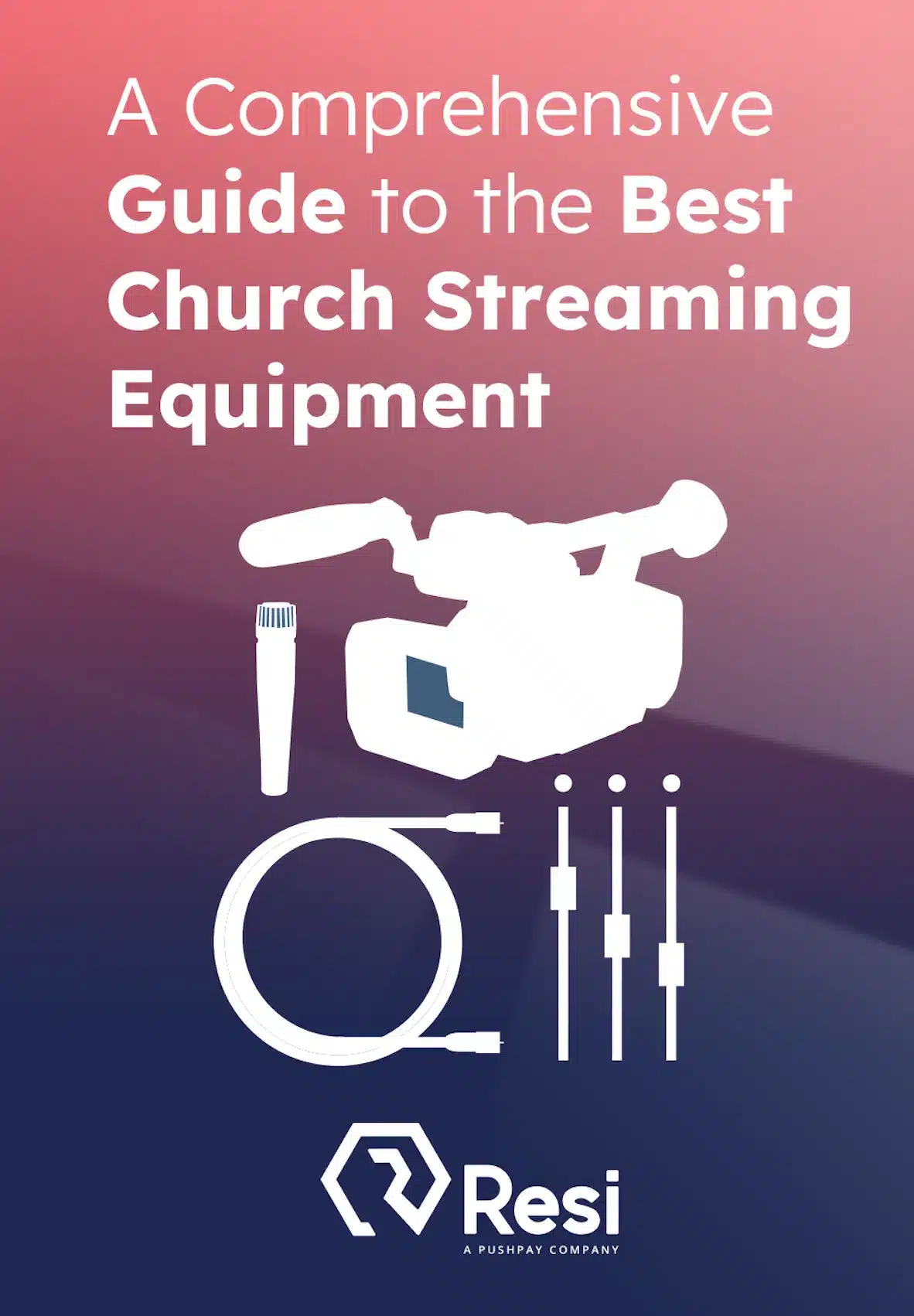Live streaming relies on different technologies to deliver video and audio from an encoder to viewers. One of the longest-standing methods for transmitting live video is RTMP (Real-Time Messaging Protocol). Originally developed by Macromedia (later acquired by Adobe) for Flash video streaming, RTMP protocol has remained widely used due to its low-latency capabilities and reliability in live broadcasting.
Churches that stream services online may come across RTMP when setting up a Resi streaming encoder or configuring their broadcast settings. While RTMP is no longer the preferred method for direct playback in browsers, it is still commonly used to transmit video from an encoder to a streaming platform before being converted into a more compatible format.
Best Livestreaming Equipment
Discover what top-rated equipment we recommend adding to your church streaming toolkit.
Download for free!
How RTMP Streaming Works
Many churches use RTMP streaming to send live video from an encoder to a streaming provider before the video is delivered to viewers. A typical setup includes a camera system connected to a Resi encoder, which processes the video and sends an RTMP feed to a platform like Resi, YouTube, or Facebook Live. From there, the platform converts the stream into a format that is compatible with browsers and mobile devices.
One of the benefits of using RTMP is its broad compatibility with encoding software and hardware. Many encoders and streaming applications, including ProPresenter, support RTMP input and output. However, since RTMP playback is no longer widely supported in browsers, most platforms automatically reformat the feed into HLS or other delivery formats for end-users.
Churches that want to maximize reliability in live streaming may benefit from a combination of RTMP for ingesting video and a more modern protocol like HLS for final delivery. Resi simplifies this process by handling encoding, transmission, and playback in one system, reducing the risk of buffering and stream interruptions.
RTMP vs. Alternatives
When comparing RTMP to HLS and RTSP, it helps to understand how each protocol functions in a live streaming workflow. While RTMP is primarily used for sending video from an encoder to a streaming platform, HLS and RTSP can serve different purposes.
- RTMP vs. HLS – HLS (HTTP Live Streaming) is the preferred format for video playback on web browsers, mobile devices, and smart TVs. Unlike RTMP, which requires a persistent connection, HLS delivers video in small chunks, making it more adaptive to network conditions. RTMP is still commonly used for ingesting video to a platform, but HLS is typically used for final delivery to viewers.
- RTMP vs. RTSP – RTSP (Real-Time Streaming Protocol) is designed for low-latency streaming and is often used in IP cameras and surveillance systems. Unlike RTMP, RTSP is not widely supported by major streaming platforms. While RTSP is useful for point-to-point video transmission, RTMP remains the better choice for sending video to cloud-based streaming services.
- RTMP vs. RSP – Resi’s Resilient Streaming Protocol (RSP) offers an alternative to RTMP by preventing interruptions and buffering during live broadcasts. Unlike traditional RTMP streaming, RSP allows for error correction, making it more reliable for churches that stream services in locations with unpredictable network conditions.
While RTMP is useful for streaming ingestion, it does not offer the same level of reliability as Resi’s resilient streaming technology, which is designed to prevent buffering and interruptions. By using the right combination of encoding, transmission, and playback protocols, churches can maintain a dependable live streaming experience for their audiences.
